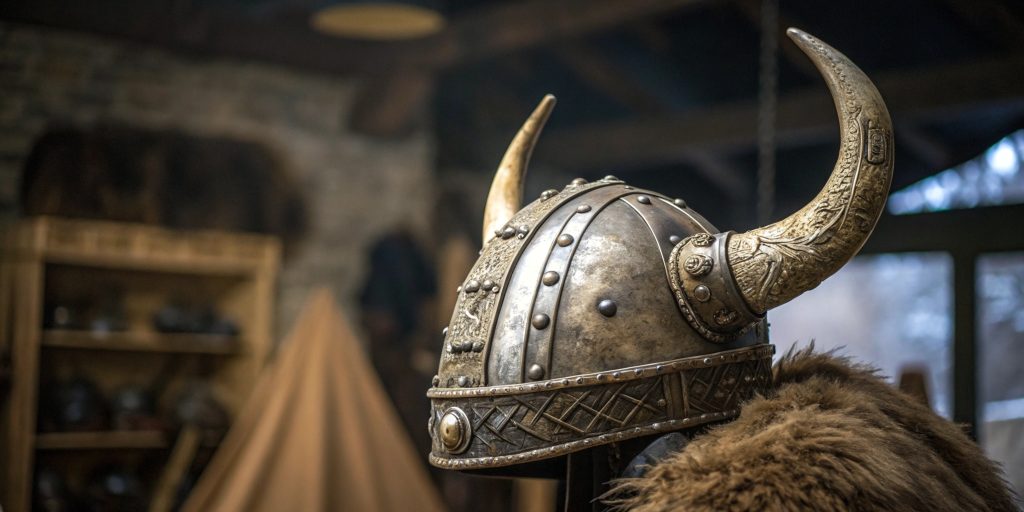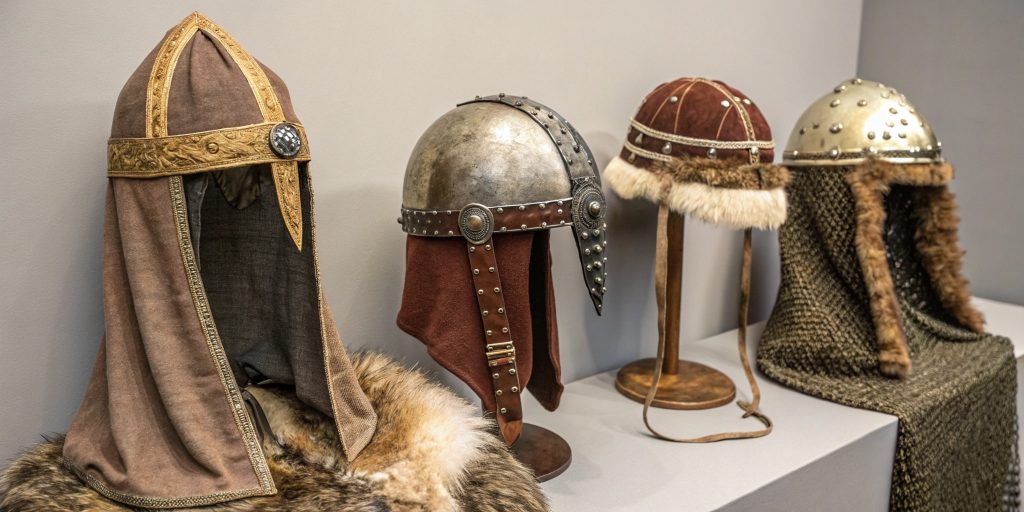Daily Life in the Viking Age, Viking Clothing and Jewelry, Vikings
Did Vikings Cover Their Hair?
Did Vikings cover their hair? This question leads us into the world of Viking headwear and clothing. The Vikings are often seen as fierce warriors in fancy clothes, but what really was their headwear like?
Exploring the Viking era, we find many myths. We need to look at old texts, digs, and real artifacts. This will help us understand Viking headwear and its role in their culture.
Introduction to Viking Headwear
The Viking culture has always fascinated us with its myths and legends. Their clothing, especially headwear, was essential. It showed their social status, jobs, and where they came from.
Viking head coverings were different for everyone. They helped people feel connected to their community. This shows how clothes can shape our identity.
Understanding Viking Culture and Clothing
Viking clothes were more than just clothes. They mixed art and culture. The materials used and the environment influenced their designs.
Headwear showed who you were in Viking society. You could be a warrior, farmer, or leader. They used wool and animal hides, demonstrating their skill in making useful and beautiful things.
Misinformation and Myths about Viking Attire
Many myths about Vikings are untrue. One big myth is the horned helmet, but there’s no proof that Vikings actually wore them.
Historians like Neil Price and Lars Magnar Enoksen have set the record straight. They tell us about the real Viking head coverings, which helps us better understand Viking culture.
What Did Vikings Wear on Their Heads
In the Viking Age, head coverings had both practical and symbolic roles. Viking women’s headwear showed their social status and met daily needs.
Types of Head Coverings in Viking Society
Viking head dress options were diverse. They included:
- Hoods made from wool or linen provide warmth and protection
- Caps, typically worn by men, which were practical for daily tasks
- Veils and wraps that were common among women, often tied around the head
- Brooches used to secure cloaks, which could also influence headwear styles
These coverings showed the roles and norms in Viking society. They revealed how clothes communicated status and identity.
Clothing Material and Styles of the Viking Era
Vikings wore clothes made of natural materials like wool and linen. These materials were durable and warm, fitting their climate.
Styles included tunics and cloaks, meeting different needs. The choice of material affected patterns and colors. Wool was rugged for work, while linen was for comfort.
Veils, with detailed embroidery, showed Viking artistry. They highlighted the importance of visual identity through head dress choices.
Common Types of Headwear: Myth vs. Reality
The horned helmet is often linked with Viking culture. But this image is filled with mistakes. Vikings did not wear horned helmets, a myth from the 19th century. Their real headwear was practical for everyday life and battles.

The Legend of the Horned Helmet
The horned helmet is a lasting symbol, but it’s wrong. There’s no solid proof for this image. Instead, Viking helmets were simple and made for protection, not looks.
Head Coverings of Viking Men and Women
Viking men and women had different head coverings. These were based on their needs and status. Here are some common ones:
- Woolen hoods kept them warm in cold weather and were easy to wear.
- Braided caps: Both men and women wore them for style and function.
- Hats and helmets for warriors: Made for safety in battles, without fancy designs.
Viking society chose practicality over fancy designs. They valued usefulness in their clothes, not just looks.
Archaeological Evidence and Historical Depictions
Exploring Viking headwear is helped by both old finds and art from history. Excavations in Scandinavian countries have found many artifacts. These give us key insights into the head coverings of these sea warriors.
Findings from Viking Graves and Sites
Places like the Oseberg and Mammen graves have yielded important finds, including pieces of old textiles and headwear. Thanks to these finds, we can see what Viking clothes looked like.
These artifacts show different kinds of head coverings, from simple wool caps to fancy ones, and they tell us about Viking fashion and culture.
Artistic Representations in Tapestries and Sagas
Viking sagas and medieval tapestries also give us clues. They show characters wearing different kinds of headgear, which shows us what was common then.
The details in these artworks, like the materials and decorations, help us understand Viking beauty and values. This mix of art and history keeps the story of Viking headwear alive and interesting.
Conclusion
Viking head dress shows a rich mix of cultural practices. It goes beyond the common myth of horned helmets. Real Viking clothes had many designs and materials, showing their environment and society.
Looking into Viking headwear is key to understanding their daily lives. Archaeological finds and history give us a clear view of their world.
This article fights against myths about Viking headwear. The real headdresses were more than just horned helmets. They were important for both Viking men and women.
By clearing up these myths, we learn more about the Vikings. This helps us see Norse history in a new light.
Studying Viking headwear helps us better understand their clothes and culture. It also shows why we need to be accurate when talking about history. This is especially true for the Vikings, who are still fascinating today.

